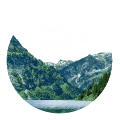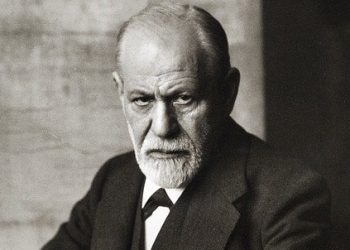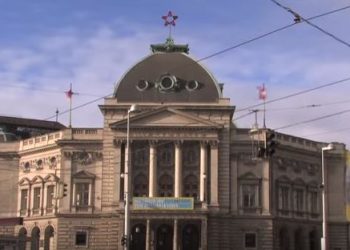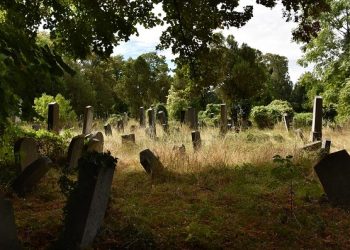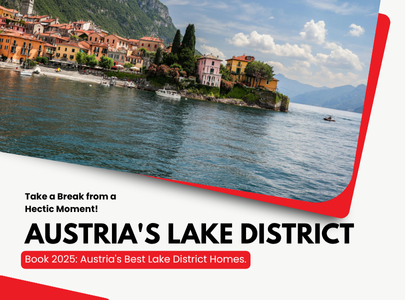Besides monuments and museums, there are many buildings throughout the city that belonged to wealthy Jewish families. Many of these buildings are actually small palaces built right on the Ringstrasse and are known as Ringstraßenpalais (Ringstrasse Palaces). You can tour along the street and marvel at the great wealth that the Jews of Vienna had before all their property was confiscated and they were deported for extermination during the Nazi era. We have compiled a list of several beautiful buildings that were under Jewish ownership and are still standing on the Ringstrasse today.
Palais Wertheim
This impressive building was built by the famous architect Heinrich Freiherr von Ferstel for the Austro-Jewish businessman Franz von Wertheim. The building was constructed between 1864 and 1868 and was converted into a residential and office building in 1910. In 1977, the first McDonald’s branch in Austria opened on its ground floor. The upper floors of the building have magnificent event halls and conference rooms.
Address: Canovagasse 1-5, 1010 Wien
Palais Gutmann
This magnificent building was constructed between 1869 and 1871 by the architect Carl Tietz in the new Viennese Renaissance style. The house was used by the wealthy Gutmann family, who were known for their business in the coal trade. The building itself is impressively beautiful, with 5 floors and wonderfully decorated rooms. The rooms feature impressive paintings, decorated wooden ceilings, marble fireplaces, wall decorations, and more. The palace was confiscated from its owner in 1938 because he was Jewish.
The palace building is located right next to the luxurious Ritz-Carlton Hotel and is owned by the real estate company Austria Immobilien GmbH.
Address: Schubertring 5-7, 1010 Wien
Palais Lieben-Auspitz
This building was erected between 1873 and 1874 for the Auspitz family and was later inhabited by the Lieben family. It is a 5-story building designed in the Neo-Baroque style. At the time of its construction, large parts of the Ringstrasse did not even exist. For example, the university building and the new building of the Vienna National Theatre did not exist at that time.
In the past, the palace housed a Viennese cultural and events center called the Salon of Berta Zuckerkandl, which served as a meeting place for intellectuals and artists like Gustav Klimt, Gustav Mahler, and Arthur Schnitzler. Today, the famous Café Landtmann is located on the ground floor of the palace.
Address: Universitätsring 4, 1010 Wien
Palais Ephrussi
This palace was built at the end of the 19th century on the Ringstrasse, right opposite the Votivkirche (Votive Church), by the famous architect Theophil von Hansen, the same architect who designed the Austrian Parliament building. The impressive structure was built for the members of the Ephrussi family, who were a wealthy Jewish family from Russia. The family members were involved in banking and oil. The building’s style is Neo-Renaissance, which was popular at the time. In 1938, the palace was confiscated from the Ephrussi family by Nazi officers and used for the offices of the Nazi party. During the bombings of World War II, the palace was severely damaged, and parts of it were destroyed. After the war, the surviving members of the Ephrussi family managed to get the palace back, but since they had no intention of returning to Austria, they sold it for a price much lower than its value – $50,000.
Address: Schottengasse, Wien
Palais Epstein
This impressive palace building was constructed at the end of the 19th century for the wealthy Jewish banker Gustav Ritter von Epstein. The architect who built it was Theophil Freiherr von Hansen, who also designed the nearby Austrian Parliament building. The 5-story building is designed in the Neo-Renaissance style. Due to financial difficulties, Epstein was forced to sell the building to an English gas company. The palace continued to change ownership and served for 10 years after the war as the headquarters of the Soviets. It was later used for a time as a branch of the Austrian Academy of Music and Arts. Today, the palace is part of the Austrian Parliament. In its basement, there is an exhibition about the history of the palace and its owners. It is also possible to join guided tours in English inside the palace.
Guided tour of Palais Epstein
Tours take place on Saturdays at 10:30 AM and 1:30 PM. Participation is free. The tour lasts about 50 minutes.
It is advisable to contact in advance to ensure a tour is taking place at your desired time. Contact email: tours@parlament.gv.at
Meeting point for the tour: Infopoint Bau.Stelle
Address: Dr.-Karl-Renner-Ring 3, 1010 Wien
Palais Todesco
This palace was built between 1861-1864 according to the plans of architects Ludwig Förster and Theophil Freiherr von Hansen for the wealthy Jewish bankers Eduard and Moritz von Todesco. This building was designed in the conventional Renaissance style of that period. The palace is located on the Ringstrasse, right opposite the Vienna State Opera, on the site where one of the old city gates once stood. The palace’s ballroom is considered one of the most beautiful among private event halls in Vienna. During World War II and the Nazi rule in Vienna, the building was confiscated and even damaged by bombings. After the war ended, it served as the offices of one of the major Austrian political parties – ÖVP.
Address: Kärntner Strasse 51, 1010 Wien
Palais Königswarter
This palace is also located near the Vienna State Opera and was built in 1862 for the Jewish banker Jonas von Königswarter. Jonas was the head of the Austrian National Bank and president of the Jewish community in Vienna. In 1860, Jonas was knighted and received the rank of baron from the emperor in 1870.
Address: Kärntner Ring 4, 1010 Wien
Read more about the Jewish community in Vienna and other Jewish places throughout the city. If you would like to stay near the beautiful Ringstrasse, you can read about a variety of recommended accommodations near the Ringstrasse.

